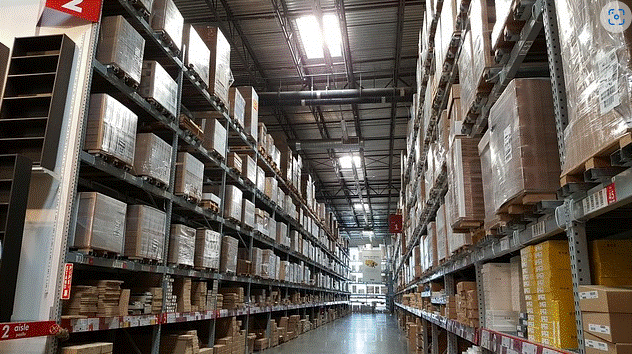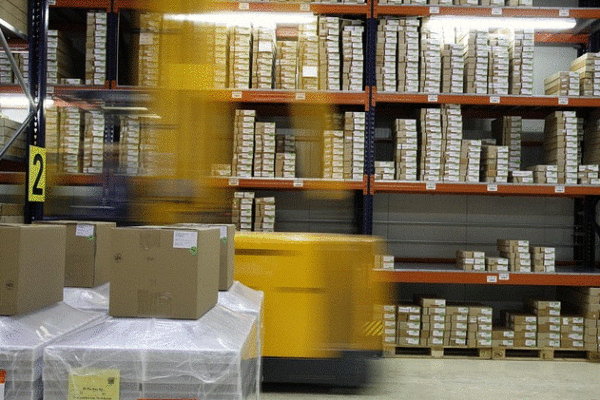If your warehouse is running on yesterday’s data, you are already behind. Imagine this: a major customer calls, furious their order is late. You have to spend an hour calling the warehouse manager, checking emails, and digging through spreadsheets to find out what went wrong. This is firefighting.
This is what happens without a Warehouse KPI Dashboard.

For an executive, the warehouse can feel like a black box. You know it’s critical, but the details are messy.
A dashboard changes that. It turns your warehouse from a cost center into a strategic asset. It gives you a live control panel for one of the most expensive parts of your business.
This is not about monitoring every single box. It’s about understanding the flow, the speed, and the cost of your entire operation in real time.
The High Cost of Flying Blind
A warehouse without a dashboard runs on hunches and heroics. Managers react to problems instead of preventing them. The financial impact is huge.
Consider that for a typical warehouse, labor can be 65% of the total operating cost. If your pickers are wasting just 15 minutes per shift looking for items, that loss adds up to thousands of dollars a week.
A dashboard turns the lights on. It shows you where the money is leaking, where the time is wasted, and where the bottlenecks are forming. Your first “aha” moment comes when you see that you are not just managing a building; you are managing a complex, living system.
The Four Executive KPIs That Tell the Whole Story
You can measure dozens of things in a warehouse. But as a leader, you need to watch the signals that impact customer satisfaction and the bottom line.
These four KPIs give you that power:

1. Order Fulfillment Cycle Time
This is simple but profound: How long does it take from the moment an order is received to the moment it ships? Customers want speed. A long cycle time means delays, unhappy customers, and higher shipping costs as you rush to meet promises.
When this number is on a dashboard, you see delays as they happen. You can ask the right question: “I see the cycle time spiked at 2 PM. What happened?” Maybe a sorter broke down, or a key picker was out. Instead of finding out days later, you can fix it that afternoon.
2. Picking Accuracy
What percentage of orders are picked correctly the first time? This is a silent profit killer. The cost of a picking error is not just the wrong item. It includes the cost of return shipping, the cost of re-picking the correct order, the cost of the lost product, and the cost of an unhappy customer.
Research suggests that the cost of a single picking error can be up to 15 times the cost of getting it right the first time. A dashboard shows you your real-time picking accuracy rate. A dip in this number is a direct signal that your profitability is taking a hit.
3. Inventory Accuracy
Your ERP system says you have 500 units of a product. But when you go to the shelf, how many are actually there? The gap between your system data and your physical stock is a major source of chaos. It leads to stockouts, missed sales, and failed promises.
A live dashboard doesn’t just show the number. It can highlight the specific items with the biggest discrepancies. This allows you to focus your cycle counting efforts where they matter most, instead of wasting time counting everything.
4. Warehouse Capacity Utilization
Is your warehouse 60% full or 95% full? This KPI tells you.
- If it’s too empty, you are wasting money on space you don’t need.
- If it’s too full, your efficiency plummets. Workers can’t move freely, and finding items takes longer.
Seeing this number helps you make smart decisions about space planning, inventory levels, and even whether you need a new facility.
Your At-a-Glance Executive Warehouse KPI Dashboard

Your dashboard should be visual. In five seconds, you should know if the operation is healthy. Here’s what that view looks like:
| Executive View | The Question It Answers | The Business Impact |
|---|---|---|
| Orders Shipped On Time Today | Are we meeting our customer promises right now? | Directly links to customer satisfaction and retention. |
| Current Picking Accuracy | Is our work quality high, or are we creating costly errors? | Protects profit margins by avoiding rework costs. |
| Live Dock Door Status | Are our trucks being loaded/unloaded efficiently, or are drivers waiting? | Highlights logistics bottlenecks that incur detention fees. |
| Orders Picked vs. Daily Goal | Are we on track to complete today’s workload? | Ensures daily execution aligns with the plan. |
From Seeing to Doing: Your Action Plan
Seeing the data is pointless if you don’t act on it. The goal is to create a culture where the dashboard drives daily decisions.
Step 1: Start with the Pain Point
You don’t need to build a perfect dashboard for the whole warehouse at once.
What is your biggest headache? Is it shipping delays? Start by tracking Order Fulfillment Cycle Time. Is it high labor costs? Start with Picks Per Hour. Focus on the one KPI that will make the biggest difference.
Step 2: Create a Daily Stand-Up Ritual
Gather the warehouse leadership in front of the dashboard for a 5-minute meeting each morning. The conversation is simple: “What do the numbers tell us about yesterday? What is our one priority for today to improve them?” This ritual builds accountability and focus.
3. Connect KPIs to Root Causes
Your dashboard helps you move from “what” to “why.” If you see Picking Accuracy drop, you can drill down.
Is the problem with one specific person? One specific product? One specific shift? This precision allows you to fix the real problem, instead of just giving a generic speech about “being more careful.”
4. Empower Your Floor Managers
Put screens with the live dashboard on the warehouse floor. When pickers and packers can see their own performance in real time, it changes behavior.
They can self-correct. They take ownership. The dashboard becomes a tool for the team, not just a report for the bosses.
The most powerful insight a Warehouse KPI Dashboard provides is the connection between daily operations and financial results. You start to see that a 1% improvement in picking accuracy directly translates to thousands of dollars saved. You see that reducing the order cycle time by one hour makes your company more competitive.
Your warehouse is not just a place to store things. It is the engine of your customer fulfillment. A live dashboard gives you the tools to tune that engine for peak performance.
Start with one metric. Start the daily conversation. The moment you see a problem on the screen and fix it before it becomes a crisis, you’ll understand the real power of data-driven leadership.






























